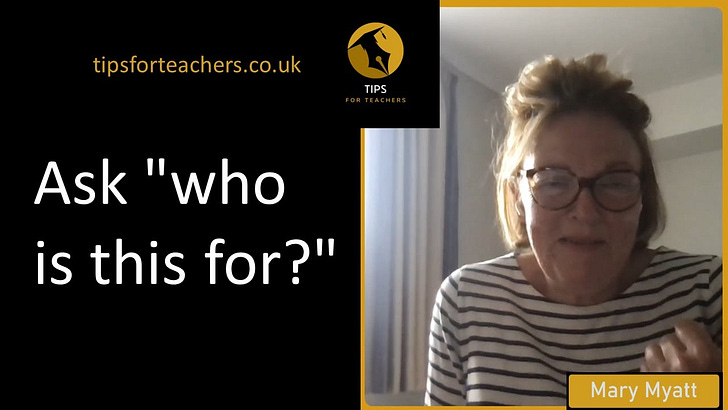Hello, and welcome to the Tips for Teachers newsletter. For over 400 ideas to try out the very next time you step into the classroom, check out my Tips for Teacher book.
💡 A quick tip to try in class this week 💡
Confession time: I am a massive group-work skeptic. Sure, I was whipping out groups left, right and centre in my early career (especially when being observed), but I never found students learned as much as when they worked individually or in pairs.
However, listening to people like Sammy Kempner and reading books like Building Thinking Classrooms in Mathematics, I am starting to change my mind.
One of the most interesting findings from Building Thinking Classrooms in Mathematics concerns group size. My groups tended to consist of 4 students, or 5 if there was an odd number. Why? To be honest, I have no idea.
In Building Thinking Classrooms in Mathematics, Peter Liljedahl instead suggests that a group size of 3 is optimum. His reasoning is that a group size of 2 does not have sufficient variety in perspectives to challenge students' ways of thinking and thus allow new ideas to form, whereas group sizes of 4 and above are likely to lead to sub-groups forming and thus group cohesion falling.
This is just scratching the surface of Liljedahl's recommendations for effective group work, but it might be an interesting one to experiment with.
What would you need to change to make this tip work for you?
When could you try it for the first time?
View all the Tips for Teachers shared so far
📺 A video to discuss with a colleague 📺
Curriculum expert, Mary Myatt, shares a key question we need to ask ourselves: who is this for?
If the video doesn't play when you click on it, click here
Subscribe to the Tips for Teachers YouTube channel so you never miss a tip
👂 A podcast episode to listen to on your way home 👂
Teacher and author, Jade Pearce, shares her five tips:
Use explicit instruction for novice learners
How to ensure questioning involves all pupils
Understand the active ingredients of retrieval practice
How to improve feedback
The power of teachers reading research
Listen to the podcast here.
Search for Tips for Teachers on any podcast platform (Apple Podcasts, Spotify, etc) and subscribe so you never miss an episode.
😎 Final bits and bobs 😎
Do you know someone who would enjoy this newsletter? Forward it to them, or direct them to the sign-up page here where you can also read all previous editions
Check out my Tips for Teachers book
Do you and your team want some high-quality training or coaching, with ideas you can use in your very next lesson? Book some Tips for Teachers CPD
Check out the all-new Tips for Teachers online courses
If you value my work, please consider becoming a Patreon



